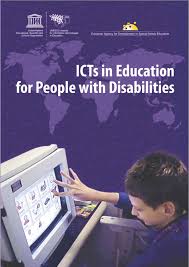EFFECTS OF INNOVATIVE MASTERY LEARNING STRATEGY ON PUPILS ACHIEVEMENT IN MATHEMATICS
₦10,000.00 ₦3,000.00
CHAPTER ONE
INTRODUCTION
1.0 Background to the Study
Mathematics is one of the world known subjects taught from elementary to higher institution. The history of the subject is traced to Greek word (máthēma) which means “knowledge, study, learning. It includes the study of such topics as quantity, structure, space, and change. Mathematicians seek and use patterns to formulate new conjectures; they resolve the truth or falsity of conjectures by mathematical proof (Wikipedia, 2018). When Mathematical structures are good models of real phenomena, then mathematical reasoning can provide insight or predictions about nature. Through the use of abstraction and logic, Mathematics developed from counting, calculation, measurement, and the systematic study of the shapes and motions of physical objects. Practical Mathematics has been a human activity from as far back as written records exist. The research required to solve mathematical problems can take years or even centuries of sustained inquiry.
Uchechi (2013) asserts that rigorous arguments first appeared in Greek mathematics, most notably in Euclid‘s Elements. Since the pioneering work of Giuseppe Peano (1858–1932), David Hilbert (1862–1943), and others on axiomatic systems in the late 19th century, it has become customary to view mathematical research as establishing truth by rigorous deduction from appropriately chosen axioms and definitions. Mathematics developed at a relatively slow pace until the Renaissance, when mathematical innovations interacting with new scientific discoveries led to a rapid increase in the rate of mathematical discovery that has continued to the present day. Mathematics is essential in many fields, including natural science, engineering, medicine, finance, and the social sciences. Applied mathematics has led to entirely new mathematical disciplines, such as statistics and game theory. Mathematicians engage in pure Mathematics (Mathematics for its own sake) without having any application in mind, but practical applications for what began as pure mathematics are often discovered later.
Teaching in today’s mixed-ability classroom can be a challenge. These days, it is not uncommon to find a wide range of abilities in the one classroom—from students struggling to grasp new concepts, to those who are way ahead of their peers from day one. Teaching Mathematics is also a world-wide activities. It ha ts own clallenges just like other subjects. Ali and Jabeen (2017) state that problems of teaching mathematics have created a range of problems for early math learners, including a large achievement gap between students. On this Ali and Jabeen (2017) add that while individual students do benefit from different learning styles, there are a range of effective strategies which can help all students to succeed in mathematics. Ali and Jabeen (2017) suggested seven effective strategies for teaching elementary Mathematics. The strategies are;
Make it hands-on: Elementary math can be difficult because it involves learning new, abstract concepts that can be tricky for children to visualize. Try to imagine what it is like for a five-year-old to see an addition problem for the very first time. Since it is a totally new concept to them, it can be hard for them to visualize a scenario where one quantity is added to another. Manipulatives are hands-on tools that make math a lot easier for young children to understand. Tools like Lego, clay, and wooden blocks can all be used in the classroom to demonstrate how math ideas work.
Use visuals and images: While students will come across countless graphs and visuals in their math textbooks, research shows this isn’t the only place they should be utilized. The most powerful way to use graphics in elementary math is in conjunction with specific practice or guidance, either from a teacher or another classroom tool such as Mathseeds.
Find opportunities to differentiate learning: It is important that students feel comfortable and are given the opportunity to learn new math ideas at their own pace, without feeling rushed. But while the idea that ‘given enough time, every student will learn’ is nothing new, it is easier said than done. Mastery learning is about giving students as much time as they need to grasp a specific skill or concept. It involves varying the time you give each student to succeed. Technology-based classroom tools offer a powerful way to differentiate learning while teaching elementary math, which is an effective way to help students in mixed-ability classrooms to succeed.
Ask students to explain their ideas: Meta-cognition is the process of thinking about your options, choices, and results, and it has a big impact on the way students learn. Before assigning a math problem, ask students to brainstorm problem-solving strategies they can use. Encourage students to work together to suggest different strategies in a respectful way. This process can be carried out at every stage of problem solving when teaching elementary math. Once students have offered an answer, ask them to verbalize step-by-step how they got that answer.
Incorporate storytelling to make connections to real-world scenarios: When it comes to igniting the interest of young minds, not much comes close to a good story. Incorporate story problems into your classroom lessons allow students to see how certain math concepts can apply to real life. Story problems are also a good way to help students understand how to use math in everyday life, and see the relevance of math.
Show and tell new concepts: Elementary math teachers should normally begin each lesson with a ‘show and tell.’ Telling is the process of sharing information and knowledge with students, while showing involves modeling how to do something. These days, teachers can really kick ‘show and tell’ up a notch with an interactive whiteboard, using animations, and videos to clearly show and tell specific math concepts in an engaging and interesting way.
Let your students regularly know how they’re doing: Feedback is an important part of teaching elementary math and improving students’ results. Let your students know how they have performed on a specific task, along with helpful ways that they can further improve and extend their skills.
One of the methods used in teaching mathematics is advance organizer. Crowell (2018) states that advance organizer is a tool used to introduce the lesson topic and illustrate the relationship between what the students are about to learn and the information they have already learned. They are used during expository instruction, which is the use of an expert to present information in a way that makes it easy for students to make connections from one concept to the next. By using an advance organizer to link the new information to old information, the new information can be remembered more easily. Crowell (2018) further states that there are three basic purposes of advance organizers. First, they direct students’ attention to what is important in the upcoming lesson. Second, they highlight relationships among ideas that will be presented. Third, they remind students of relevant information that they already have.
Uchechi (2013) states that Mastery learning instructional approach is based on behavioural learning theory. Behaviourists believe that learning is influenced by the experiences that learners are exposed to within the environment. Taoheed, Ali and Jabeen (2017) add that mastery learning strategy is a teaching strategy that works on the principal of ”take your time”. lt allows multiple opportunities to demonstrate mastery of the content taught. It involves breaking down and then sequential organization of learning material into small units with predetermined objective. The learner passed through each unit in organized fashion. Every student is allowed the required time to master a given piece of task before moving to the next unit. At the end of each unit student pass though formative assessment followed by feedback and corrective assignments. Students must demonstrate mastery on unit tests before moving on to next. Feedback point out learning difficulties and “corrective assignment “correct these difficulties of learners.
Taoheed, Ali and Jabeen (2017) further add that mastery learning Strategy works in psychological order of learning. Learner proceeds from easy to difficult. According to Bloom’s taxonomy of behavioral objectives learner proceeds from lower to higher order of cognitive domain, i.e. from knowledge to comprehension and so on. If lower order of cognitive domain is not mastered, this could deter a learner to proceed to the next higher order of cognitive domain. Therefore Bloom’s (1968) mastery learning stress on ensuring that all learners should have a better understanding of the concepts taught before moving to the next level. Yemi (2018) also states that the concept of mastery learning is rooted in ancient Greek philosophy but the prominent work on mastery learning is done by Johw B. Carroll and Benjamin Samuel Bloom. Carrol (1963) present theoretical model of mastery learning and Bloom (1968) convert it into the practical model of school learning. After Bloom’s (1968) mastery learning model, educationist and researcher start working on this concept. Most of the work has been done on cognitive and effective learning outcomes. Very few studies considered learning retention which is indispensible variable for transfer of new knowledge.
Researchers have presented different findings on the pupils’ attitudes of Mastery Learning Strategy. Adeyemo, Veronica and Babatunde (2014) submit that Mastery Learning Strategy used in teaching pupils stressed more of mastery of content, through corrective feedback and remediation rather cooperative skills but the results showed that Mastery Learning Strategy is superior to conventional teaching method in terms of achieving higher scores. Mastery Learning Approach allows students to have enough time to master the prerequisites before making progress. Poor academic performance in physics could also be attributed to many factors among which teacher’s strategy itself was considered as an important factor. Yemi (2018) affirms that Mastery Learning Strategy allows pupils to have enough time to master the prerequisites before making progress. Poor academic performance of pupils could also be attributed to many factors among which teacher’s strategy itself was considered as an important factor.
Omosewo (1993) in Adeyemo, Veronica and Babatunde (2014) implies that the mastery of physics concepts might not be fully achieved without laboratory work. The teaching of physics without laboratory work may certainly result in poor academic achievement. However, Arlin and Webster (1983) raised an important issue regarding the use of instructional time in Mastery Learning. He argued that low achievers in grouped |\/Iastery Learning do better because of corrective instruction, but faster students may be slowed down waiting for the other students.
Also, Wachanga and Gamba (2004), in their study on effects of using Mastery Learning Approach on secondary school students’ achievement in Chemistry found that Mastery Learning Approach facilitates students learning Chemistry better than the regular teaching method.
Patrcia, Wambugu and Jonhson (2015) found out that cooperative class experiment teaching method facilitated students’ mathematics learning. This method also increased student’ motivation to learn. The cooperative concept mapping approach teaching method enhanced the teaching of other school subjects in other levels of education. A research done in the teaching of mathematics by Kibett and Kathuri (2005) revealed that students who were taught using mastery learning out-performed their counterparts in regular teaching approach.
Amiruddin, Abd. Samad and Othman (2014) add that mastery learning has been studied widely, and the advantages are clear in terms of improved performance by the trainees.There are advantages of mastery learning in mathematics, which depend on various models and designs formulated to achieve mastery learning and the way they are delivered. The two variables shown to have influenced on practice include 1) the way in which the task is practiced, either as the whole task, practice of parts in a sequential order, or practice of parts in a random order, which is also known as contextual interference and 2) the way in which practice sessions are distributed, either as massed or regular teaching sessions, which is also known as distributed practice. The present study examined the effects of innovative mastery learning strategy on pupils achievement in Mathematics.
1.2 Statement of the problem
Teaching Mathematics in elementary schools is an herculean task for Mathematics teachers. This is because the pupils may not have some prerequisite knowledge of the subject taught. Also, the pupils in elementary classes may find it difficult to understand the concepts in Mathematics. This is one of the reasons why many students use to have deficiency in mathematics in their final examination. Also, the hatred of mathematics has been registered in the brain of many pupils from elementary classes. In fact, it is certain that if many of student’s opinion were sampled on cancelling mathematics, they will support the motion. Not that they do not realize that mathematics is an essential subject but because of its difficulties.
However, mathematic is believed to be interesting in elementary classes if mathematics teachers are innovative in finding ways of making the concepts clearer and easier for the students. On this, the researcher intends to carry out an investigation on the effects of innovative mastery learning strategy on pupils achievement in mathematics.
1.3 Research Questions
What is the Significant Difference between the achievement of pupils in Mathematics when taught with mastery learning strategy and with the conventional lecture method?
What difference exists between the mean scores of male and female pupils in Mathematics when taught using innovative mastery learning strategy and the conventional lecture method?
How do pupils of different interest levels differ in their achievement in Mathematics when taught with innovative mastery learning strategy and with the conventional lecture method?
1.4 Purpose of the study
The study sought to investigate effects of innovative mastery learning strategy on pupils’ achievement in mathematics. It also sought to determine the difference in the performance of students taught with innovative learning strategy and those taught with other strategies.
1.5 Significance of the Study
The main purpose of this study is to investigate the effects of innovative mastery learning strategy on pupils’ achievement in mathematics. The study is significant because it reveals the importance of innovative learning strategy in making mathematics subject easier to understand during teaching-learning process. The research work will also be useful for education planner in the school, the State government and Federal Government at large to know the effects of innovative learning strategy in teaching mathematics.
1.6 Scope and Limitation of the Study
The study is focused on elementary schools in Afijio Local Government area of Oyo State.
1.7 Operational Definition of Terms
Mathematics: This is a subject taught in all levels of education which primarily deals with numbers.
Innovative Mastery Learning: This is one of the recent methods in teaching mathematics to students with the intention of making the subject easier to learn.
Elementary: This is also known as primary school. It is the first stages of education which Nigerian government recognizes as Basic education.
Description
ABSTRACT
The study focused on effects of innovative mastery learning strategy on pupils’ achievement in Mathematics. The case study of this study is Afijio Local Government. The objective of the study sought to determine the difference in the performance of students taught with innovative learning strategy and those taught with other strategies.
The research design used for the study was pre test and post test quasi-experimental design. One hundred and eighty three (183) students were randomly sampled as respondents in the schools. Two schools were used for experimentation and other two schools while the other two schools were used for experiment control group. Analysis of Covariance (ANCOVA) was used to analyse the findings. Test Re-test reliability method was used to estimate reliability of the instrument, r = 0.05
The result of the findings showed that innovative mastery learning strategy is more effective in facilitating pupils’ achievement in Mathematics than the conventional lecture method; and that gender is a significant determinant of the pupils’ performance in Mathematics whereas pupils’ interest is not. The implications of these observations are that teaching strategies adopted by Mathematics teachers and pupils’ gender are significant predictors of pupils’ performance.
The study concluded that innovative mastery learning strategy is more effective in facilitating pupils’ achievement in Mathematics than the conventional lecture method; and that gender is a significant determinant of the pupils’ performance in Mathematics whereas pupils’ interest is not. The implications of these observations are that teaching strategies adopted by Mathematics teachers and pupils’ gender are significant predictors of pupils’ performance. Consequently, it is recommended that teachers of Mathematics should always adopt innovative mastery learning strategy in teaching these concepts; and that gender factor should not be overlooked in any teaching-learning situation, hence, earnest efforts should always be made to ensure gender-friendly Mathematics classrooms.
Key words: Innovative, Mastery, Learning, Strategy, Mathematics, Pupils







Reviews
There are no reviews yet.